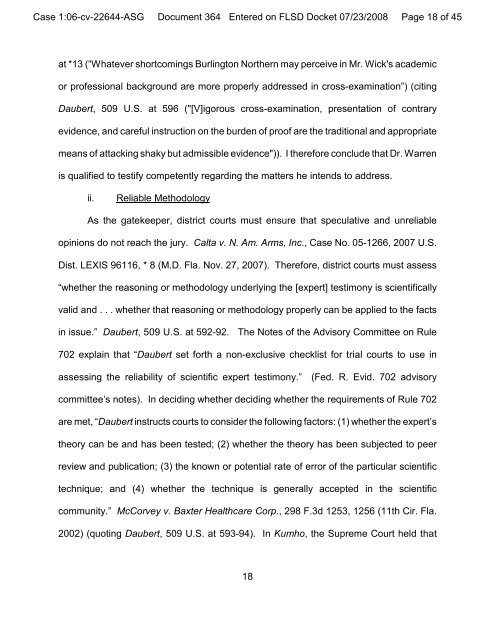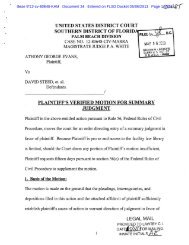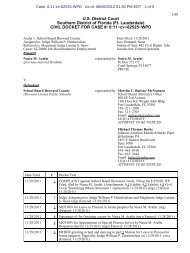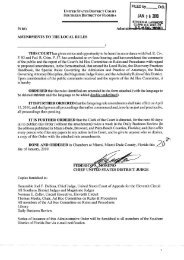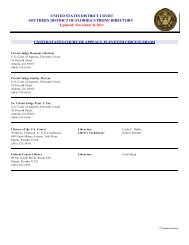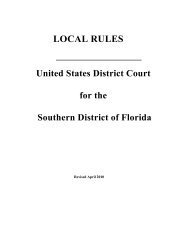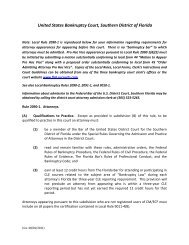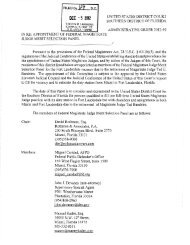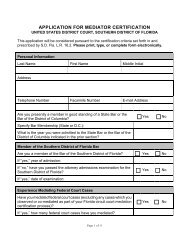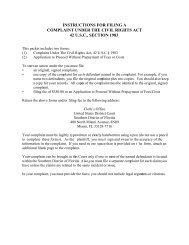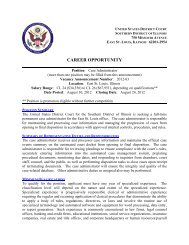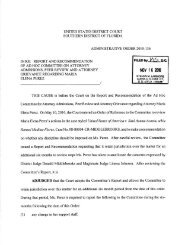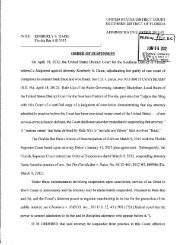Motion in Limine - United States District Court
Motion in Limine - United States District Court
Motion in Limine - United States District Court
You also want an ePaper? Increase the reach of your titles
YUMPU automatically turns print PDFs into web optimized ePapers that Google loves.
Case 1:06-cv-22644-ASG Document 364 Entered on FLSD Docket 07/23/2008 Page 18 of 45<br />
at *13 (“Whatever shortcom<strong>in</strong>gs Burl<strong>in</strong>gton Northern may perceive <strong>in</strong> Mr. Wick's academic<br />
or professional background are more properly addressed <strong>in</strong> cross-exam<strong>in</strong>ation”) (cit<strong>in</strong>g<br />
Daubert, 509 U.S. at 596 ("[V]igorous cross-exam<strong>in</strong>ation, presentation of contrary<br />
evidence, and careful <strong>in</strong>struction on the burden of proof are the traditional and appropriate<br />
means of attack<strong>in</strong>g shaky but admissible evidence")). I therefore conclude that Dr. Warren<br />
is qualified to testify competently regard<strong>in</strong>g the matters he <strong>in</strong>tends to address.<br />
ii. Reliable Methodology<br />
As the gatekeeper, district courts must ensure that speculative and unreliable<br />
op<strong>in</strong>ions do not reach the jury. Calta v. N. Am. Arms, Inc., Case No. 05-1266, 2007 U.S.<br />
Dist. LEXIS 96116, * 8 (M.D. Fla. Nov. 27, 2007). Therefore, district courts must assess<br />
“whether the reason<strong>in</strong>g or methodology underly<strong>in</strong>g the [expert] testimony is scientifically<br />
valid and . . . whether that reason<strong>in</strong>g or methodology properly can be applied to the facts<br />
<strong>in</strong> issue.” Daubert, 509 U.S. at 592-92. The Notes of the Advisory Committee on Rule<br />
702 expla<strong>in</strong> that “Daubert set forth a non-exclusive checklist for trial courts to use <strong>in</strong><br />
assess<strong>in</strong>g the reliability of scientific expert testimony.” (Fed. R. Evid. 702 advisory<br />
committee’s notes). In decid<strong>in</strong>g whether decid<strong>in</strong>g whether the requirements of Rule 702<br />
are met, “Daubert <strong>in</strong>structs courts to consider the follow<strong>in</strong>g factors: (1) whether the expert’s<br />
theory can be and has been tested; (2) whether the theory has been subjected to peer<br />
review and publication; (3) the known or potential rate of error of the particular scientific<br />
technique; and (4) whether the technique is generally accepted <strong>in</strong> the scientific<br />
community.” McCorvey v. Baxter Healthcare Corp., 298 F.3d 1253, 1256 (11th Cir. Fla.<br />
2002) (quot<strong>in</strong>g Daubert, 509 U.S. at 593-94). In Kumho, the Supreme <strong>Court</strong> held that<br />
18


